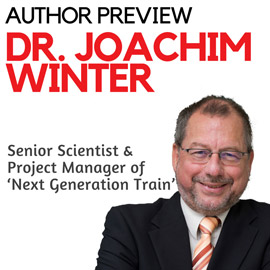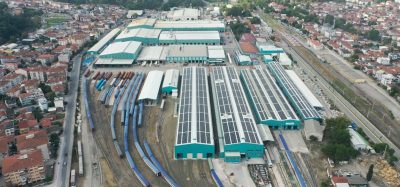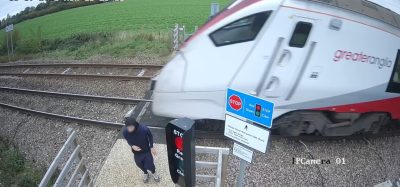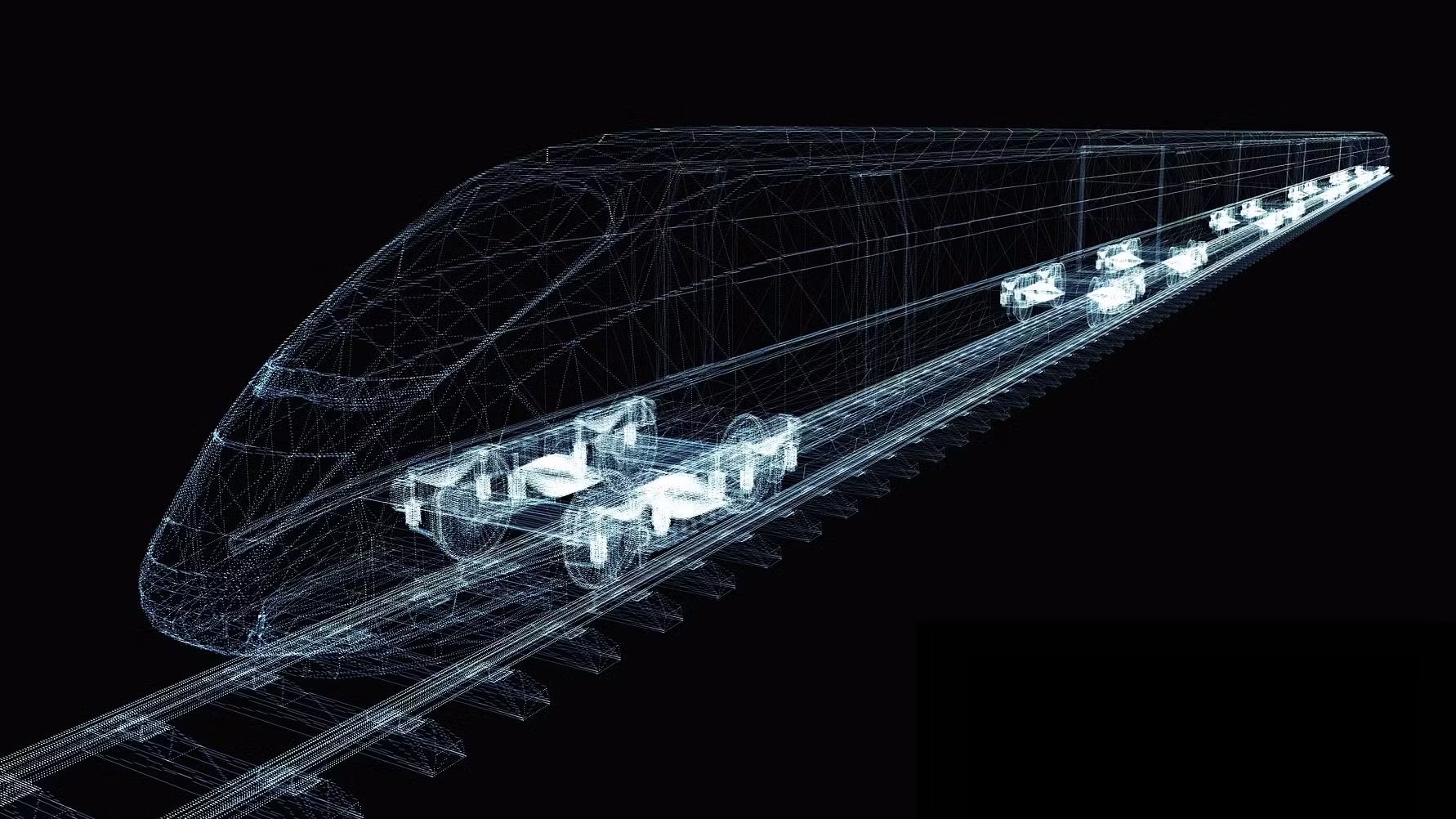German research centre encourages the European railway industry
Posted: 21 April 2016 | | No comments yet
In Global Railway Review Issue 3 2016 published in May, Dr. Joachim Winter – Senior Scientist/Project Manager of ‘Next Generation Train (NGT)’ at the German Aerospace Center – will present the high-speed passenger train project Aeroliner3000, winner of the DfT/RSSB’s competition ‘Tomorrow’s Train Design Today’. Here, Dr. Winter gives a quick overview of the research centre and its involvement with the railway industry…




In Global Railway Review Issue 3 2016 published in May, Dr. Joachim Winter – Senior Scientist/Project Manager of ‘Next Generation Train (NGT)’ at the German Aerospace Center – will present the high-speed passenger train project Aeroliner3000, winner of the DfT/RSSB’s competition ‘Tomorrow’s Train Design Today’. Here, Dr. Winter gives a quick overview of the research centre and its involvement with the railway industry.
The German Aerospace Center (Deutsches Zentrum für Luft- und Raumfahrt – DLR) is internationally renowned for its contributions to research and development in aerospace as well as for its tasks as the German space agency. Less well known, but at the same level of quality and innovation, is the DLR’s research and development involvement in energy and ground transportation which has been ongoing now for 40 years and 15 years respectively.
“DLR’s activities in transport research place special emphasis on enhancing performance and attractiveness in rail transport”
The transportation sector is continuously growing. Rail transport is capable of relieving long-distance road and short-distance flight traffic, given that the rail system is a convincing alternative. This is why the DLR’s activities in transport research place special emphasis on enhancing performance and attractiveness in rail transport. The focus of the research is both on the rail vehicle itself and on technical, operational, and economic aspects of the railway system. Close cooperation with leading companies in the railway industry and operators ensures knowledge transfer at an early stage.
Join our free webinar: Rail cyber-security in a time of technological and regulatory transformation
Join our expert panel, including speakers from Nokia and Siemens Mobility, to explore the critical convergence of cybersecurity and 5G rail comms.
Date: 3 Dec | Time: 15:00 GMT
Can’t attend live? No worries – register to receive the recording post-event.
Under the brand name Next Generation Train (NGT), scientists and engineers at the DLR are carrying out research on concepts for a family of innovative high-speed trains for passengers and freight. Overriding goals are keeping travelling times as short as possible while considerably reducing specific energy consumption and noise emissions and increasing passenger comfort. Competitive life cycle costs and compliance with existing safety standards are natural marginal conditions. Consequently, the 11 participating DLR institutes have joined forces in a broad-range approach to the manifold challenges in the fields of vehicle concepts, aerodynamics, structural dynamics, driving dynamics, propulsion technology, materials, and lightweight design.
Holistic systems approach for innovative future rail vehicles
In order to enhance the competitiveness of rail transport, DLR scientists are working on a holistic systems approach for innovative future rail vehicles. Modularisation and intelligent system integration, similar to the cutting-edge in other modes of transport, enable considerably more cost-efficient and lightweight construction of more spacious rail vehicles. Mechatronic independently-rotating-wheel bogies and inductive power supply stand to revolutionise propulsion. Optimal aerodynamics guarantee management of head-pressure waves and high crosswind stability.
Improving intermodal transport
Low noise levels outside and inside a train are a must for people living along a railway line or riding on it. Sophisticated energy and thermal management ensures comfortable yet economical air conditioning for passengers. More passengers could be attracted to use the railway by a seamless door-to-door logistics chain enabled by an improved intermodal transport digitalisation. Stations are important nodes in such intermodal transport networks for passengers as well as for freight. To exploit their potentials for the effectiveness and efficiency of the overall system, from our point of view, more emphasis should be placed on them (again).
To these ends, DLR scientists are working on new technologies, methods, and concepts for operational, technical, and economic optimisation of the entire railway system. Demand-oriented dimensioning of infrastructure, identification and elimination of track and system bottlenecks, reduction of pollutant and noise emissions through technical measures and operational procedures are focal points of the DLR’s research. A further focus is the life cycle management of railway infrastructure with special emphasis on early identification and implementation of cost-saving potentials, integrated assessment in system design, optimisation of migration processes, and demand-oriented maintenance. Multi-sensor measuring systems are being developed for the collection of georeferenced data.
Safety research
The DLR advances the development of new, cost-efficient process control and safety technologies. A matter of special importance is the work geared to a European harmonisation of railway services with special emphasis on interoperability as well as optimisation of test and validation procedures. The DLR’s work aims at complementing the previously mostly technology-driven approach with the important human factor. Regardless of whether it is about the workplace of the traction vehicle driver, the traffic controller, or the dispatcher; when dealing with challenges in human-machine interaction, the DLR takes human beings with all their strengths and weaknesses into consideration.
An example how knowledge transfer works at the DLR is given in Dr. Winter’s forthcoming article. It will present the high-speed passenger train project Aeroliner3000, winner of DfT/RSSB’s competition ‘Tomorrow’s Train Design Today’. The DLR is technology sub-contractor of the Munich-based design company Andreas Vogler Studio. One result of the joint approach is a life-size mock-up of an 8m segment of an Aeroliner3000 intermediate car which is under construction right now. It will be presented in September 2016 at the InnoTrans trade fair in Berlin.
|
Dr. Winter’s article in Global Railway Review Issue 3 2016 will appear alongside other rolling stock related articles including a round-up of new manufacturing tenders and investments. Click here to sign-up and receive your free print or online subscription. |
OUT NOW: The Definitive Guide to Rail’s Digital Future
The rail industry is undergoing a digital revolution, and you need to be ready. We have released our latest market report, “Track Insight: Digitalisation.”
This is not just another report; it’s your comprehensive guide to understanding and leveraging the profound technological shifts reshaping our industry. We move beyond the buzzwords to show you the tangible realities of AI, IoT, and advanced data analytics in rail.
Discover how to:
- Optimise operations and maintenance with real-time insights.
- Enhance passenger services through seamless, high-speed connectivity.
- Leverage technologies like LEO satellites to improve safety and efficiency.
Featuring expert analysis from leaders at Nomad Digital, Lucchini RS, Bentley Systems and more, this is a must-read for any rail professional.







